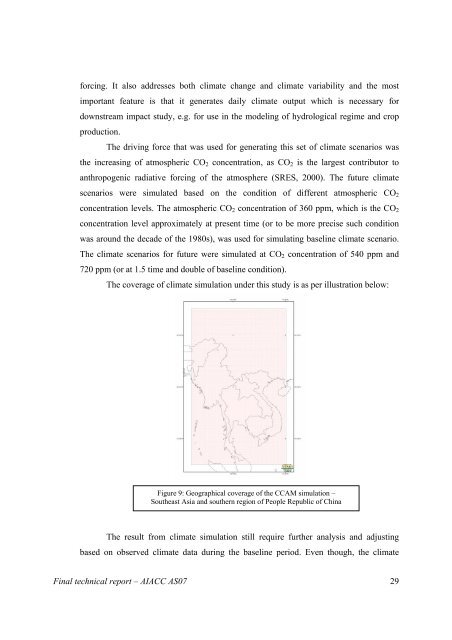Final Technical Report - weADAPT
Final Technical Report - weADAPT
Final Technical Report - weADAPT
- No tags were found...
Create successful ePaper yourself
Turn your PDF publications into a flip-book with our unique Google optimized e-Paper software.
forcing. It also addresses both climate change and climate variability and the most<br />
important feature is that it generates daily climate output which is necessary for<br />
downstream impact study, e.g. for use in the modeling of hydrological regime and crop<br />
production.<br />
The driving force that was used for generating this set of climate scenarios was<br />
the increasing of atmospheric CO 2 concentration, as CO 2 is the largest contributor to<br />
anthropogenic radiative forcing of the atmosphere (SRES, 2000). The future climate<br />
scenarios were simulated based on the condition of different atmospheric CO 2<br />
concentration levels. The atmospheric CO 2 concentration of 360 ppm, which is the CO 2<br />
concentration level approximately at present time (or to be more precise such condition<br />
was around the decade of the 1980s), was used for simulating baseline climate scenario.<br />
The climate scenarios for future were simulated at CO 2 concentration of 540 ppm and<br />
720 ppm (or at 1.5 time and double of baseline condition).<br />
The coverage of climate simulation under this study is as per illustration below:<br />
Figure 9: Geographical coverage of the CCAM simulation –<br />
Southeast Asia and southern region of People Republic of China<br />
The result from climate simulation still require further analysis and adjusting<br />
based on observed climate data during the baseline period. Even though, the climate<br />
<strong>Final</strong> technical report – AIACC AS07 29
















